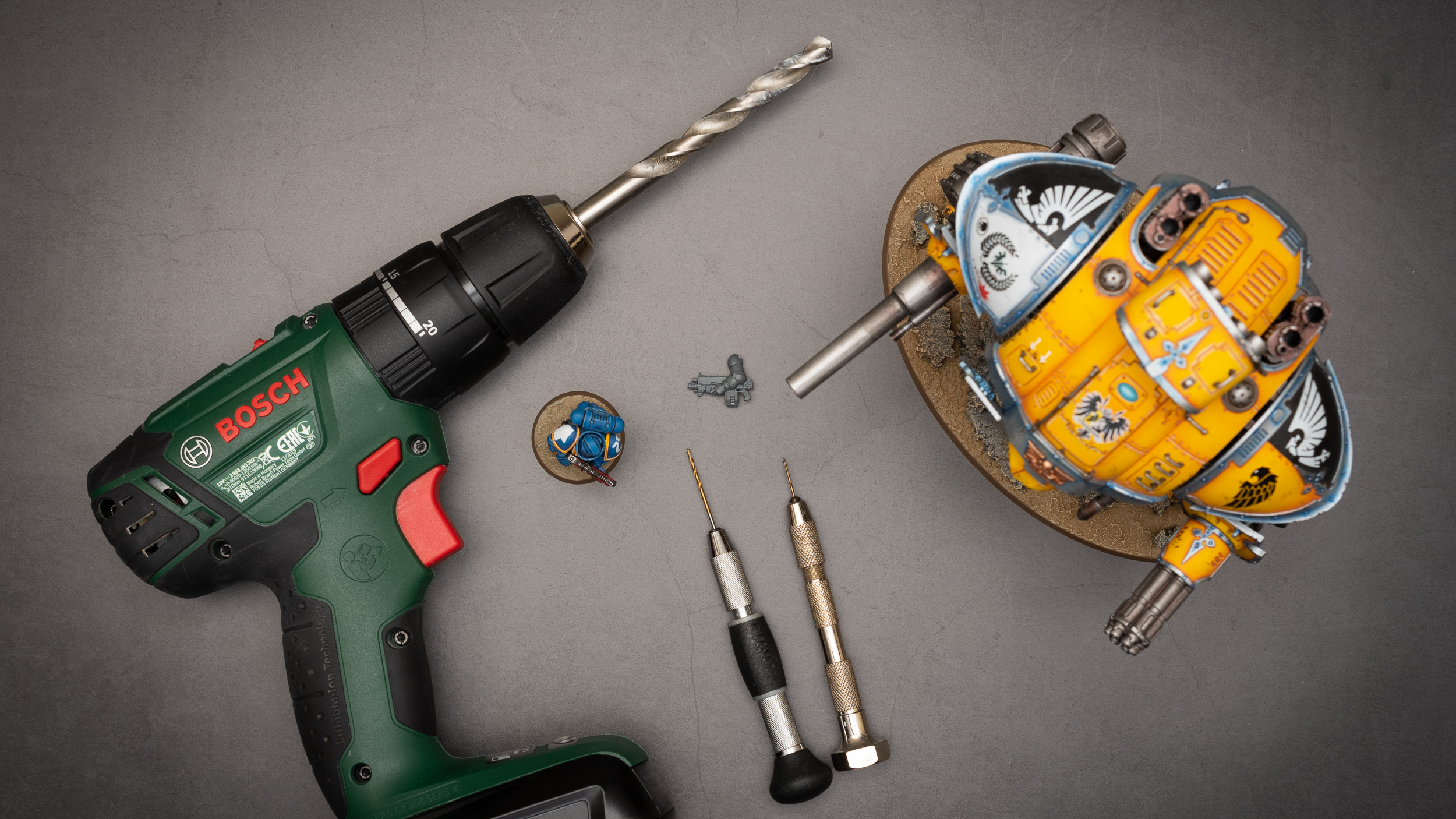

Have you been on the the receiving end of online hobbyists who’s only comment on your excellent paint job is “Drill your barrels out”. Have you ever experienced the fear of drilling a muzzle hole on your 40K weapons? It’s that potential catastrophe of it not being dead centre. Is it really that important? No, of course it isn’t important. It’s your hobby and you don’t have to drill them out. However, if you’d like a ToP Tip on an easier and more accurate way to drill your muzzles then read on!




Firstly, you don’t need a cordless drill for this. That was me having a bit of fun in the first image. You will need a sewing pin and a pin vise tool (sometimes called a pin vice or hobby drill) and some tiny drill bits (these tend to come with the tool).
The trick to accurately drill tiny holes in the end of your models’ weapons is to mark the centre with the sewing pin. Gently make a light pin prick and then check it. If you’re not happy with it use a craft knife to scrape away the mark and have another go until you’re happy with the centre. Once happy, push the pin in a bit harder to make a bigger indentation.


With your pilot hole marked it’s time to commit with the pin vise. Locate the Tip of the bit into the mark you made and slowly give it a couple of turns then check to see that it’s still centred. If all is good keep going to a depth you’re happy with. For bolters I like to I drill past the side holes on the barrel (muzzle suppressor?) and then drill those side holes out as well.


That’s it, that’s all it takes. I hope this helps and makes you want to give it a try.









I found that if you drill the barrel and it’s off-centre, you can make it look better by carving a slight chamfer on the edge of the bore, to make the drilling look more concentric.
If you’re drooling something bigger than a bolter I find it’s often better to start with a tiny bit and work your way bigger. Trying to remove too much at once can sometimes cause the bit to dig in and pull sideways. Also, if you find your bit digging in, you can often sort it by turning the bit backwards a few times